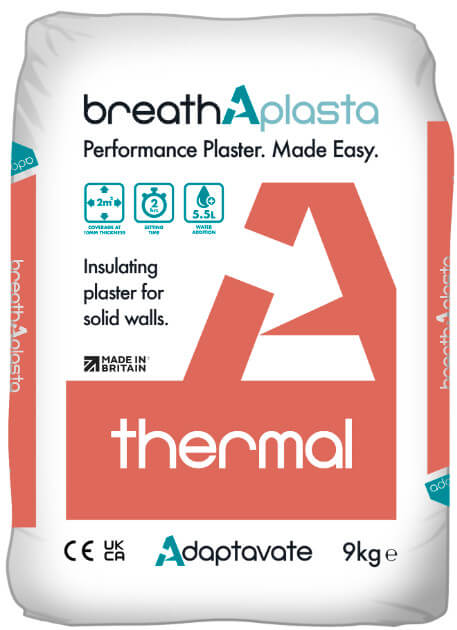Watching your first coat of plaster dry like watching paint dry? Discover the science behind proper drying times and expert techniques to achieve that perfect finish.
Understanding the First Coat: What You Need to Know
The first coat of plaster, also known as the scratch coat or base coat, is the foundation of any successful plastering project. This crucial layer typically consists of a carefully balanced mixture of sand, cement, and sometimes lime. Its primary purpose extends beyond mere wall coverage – it creates an essential rough textured surface that promotes proper adhesion for subsequent layers. A properly applied first coat should measure between 10-12mm in thickness when using traditional mixes, though some modern techniques may call for thinner applications of around 2mm.
At Kent Plasterers, we’ve observed that many DIY enthusiasts and even some professionals underestimate the importance of this initial layer. The scratch coat serves multiple functions: it strengthens the wall surface, enhances insulation properties, improves soundproofing, and helps prevent future cracking. Getting this layer right is absolutely crucial for the overall success of your DIY plastering project.
Common Reasons for Slow Drying Times
- Incorrect mixing ratios – Too much water in the mix can significantly extend drying time
- Excessive thickness – Applying the coat too thickly prevents proper curing
- Poor ventilation – Insufficient air circulation slows down the drying process
- High humidity levels – Moisture in the air can delay drying
- Low temperatures – Cold conditions can significantly extend curing time
- Sealed rooms – Lack of air exchange prevents moisture evaporation
The Science Behind Proper Plaster Drying
Understanding the chemistry behind plaster drying is essential for achieving optimal results. When plaster dries, it undergoes a two-stage process: evaporation and hydration. During evaporation, excess water from the mix escapes into the air. This is followed by hydration, where the remaining water chemically bonds with the cement particles to create a strong, durable surface. Research shows that approximately 90% of drying occurs in the first 24-48 hours, but complete curing can take up to 28 days for maximum strength.
Environmental Factors Affecting Drying Time
The environment plays a crucial role in how quickly your first coat of plaster dries. Optimal conditions include temperatures between 15-20°C and relative humidity levels of 50-60%. Higher temperatures can cause the plaster to dry too quickly, leading to cracking, while lower temperatures can significantly extend drying times. Good ventilation is essential but avoid direct drafts or heat sources that could cause uneven drying.
Expert Solutions for Faster Drying Times
- Use dehumidifiers to control moisture levels in the room
- Create controlled airflow by opening windows on opposite sides of the room
- Maintain consistent temperature using proper heating during colder months
- Apply correct thickness – follow manufacturer guidelines strictly
- Use accelerated drying compounds when appropriate and weather conditions permit
- Consider using fans strategically placed to promote air circulation
Signs Your First Coat Is Ready for the Next Stage
Knowing when your base coat is ready for the next layer is crucial for achieving professional results. The surface should be uniformly dry and firm to the touch, with no soft or damp spots. A properly dried first coat will have a lighter colour than when first applied and should make a solid sound when tapped lightly. Wait until the entire surface has achieved this state before proceeding with subsequent layers.
Professional Tips for Perfect Results
- Mix ratios: Follow manufacturer specifications exactly
- Surface preparation: Ensure walls are clean, stable, and properly dampened
- Application technique: Apply with firm, even pressure using quality tools
- Temperature monitoring: Keep room temperature consistent throughout drying
- Moisture control: Use moisture meters to verify drying progress
When to Call in the Professionals
While many aspects of plastering can be handled by skilled DIY enthusiasts, certain situations warrant professional intervention. Complex projects, large areas, or challenging environmental conditions often require expert knowledge and experience. At Kent Plasterers, we’ve seen how professional expertise can save time, money, and frustration in the long run. Statistics show that over 60% of DIY plastering projects require some form of professional correction.
Final Thoughts: Getting It Right the First Time
The success of your plastering project largely depends on how well you manage the first coat. Understanding the science behind plaster drying, maintaining optimal environmental conditions, and following professional guidelines will help ensure excellent results. Remember that patience is key – rushing the drying process can compromise the integrity of your entire project. When in doubt, consulting with experienced professionals like Kent Plasterers can help you achieve that perfect finish you’re looking for.
FAQ
What is the first coat called in plastering and its thickness should be?
The 1st coat is undercoat of thickness of 10-15mm. 2nd coat is floating coat of 6-9mm thickness. The last coat is the finishing coat of 2-3mm thickness.
What is the first coat of new drywall?
A coat of a 100% acrylic primer-sealer is recommended for new drywall. Drywall primer-sealers come in water-based (latex) and oil-based (alkyd) forms. Standard sealers are appropriate for perfectly smooth and well-finished walls. High-build primer-sealers fill in rough or uneven drywall finishing.
What are the levels of finish in plaster?
There are 3 levels of finish defined in AS/NZS2589 for the installation and finishing of plasterboard. These are named Level 3 to Level 5 inclusive, with Level 5 being the highest standard.
What is the first coat of drywall called?
Bed coat: The first coat of joint compound applied over the joints between sheets of drywall for tape embedment. Block coat: The second coat of joint compound that’s applied on top of drywall tape. Bond failure: A lack of adhesion between joint compound and the drywall panel.
What are the three coats of plaster?
In the 3- coat plaster, the first coat is known as rendering coat second coat known as floating coat and the third coat is known as setting coat or finishing coat.
Sources
[1] https://plasteringnational.com.au/what-is-the-first-coat-of-plastering/
[2] https://www.gypsumtools.com/blog/6-stages-of-plastering/
[3] https://www.youtube.com/watch?v=6UZbpG0qjzc

